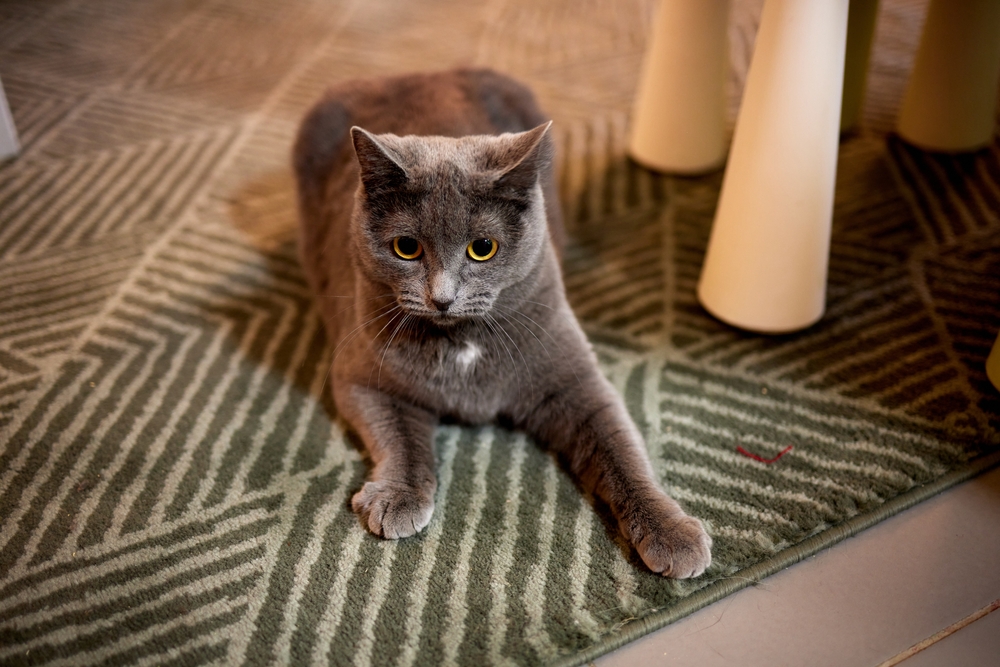Cats instinctively hide illness and pain signs, and many cat owners are often surprised to learn their cat is suffering from arthritis. However, feline arthritis is much more common than you think. This painful and degenerative joint condition decreases cats’ quality of life, but by learning how to identify and manage this disease, you can help improve your cat’s joint health and comfort. Our Palisades Veterinary Hospital team explains feline arthritis causes, signs, diagnosis, and treatment.
Feline arthritis is more common than you think
You may know that arthritis is common in people and dogs, but veterinary professionals now understand that this degenerative joint disease also frequently affects cats. According to experts, more than 60% of cats older than 6 years of age have arthritis. However, until relatively recently, veterinarians rarely diagnosed and treated feline arthritis. Cats are experts at hiding their pain, and owners often mistakenly attribute pain-related behavioral changes to old age because they didn’t recognize the signs, leaving many cats’ arthritis pain untreated for years.
Arthritis signs look different in cats and dogs
Arthritis signs vary depending on the joint affected and the degeneration severity. Cats’ arthritis signs are typically less obvious than those of dogs. While affected dogs commonly limp and vocalize, affected cats rarely exhibit these signs. Keep an eye out for these feline arthritis signs:
- Reduced activity
- Reluctance to jump or stretch
- Jumping to lower surfaces
- Refusal to use stairs
- Stiffness, especially after sleeping
- Difficulty getting in and out of the litter box
- Inappropriate elimination
- Avoiding interaction with other pets or people
- Irritable behavior
- Hiding
- Difficulty bending down to eat or drink
- Reduced grooming
- Matted or unkempt coat
- Overgrooming painful areas, particularly over joints
An early feline arthritis diagnosis provides pain relief sooner
Schedule your whiskered pal’s regular veterinary wellness visits to spare your cat from suffering in silence until they exhibit obvious discomfort signs. Our Palisades Veterinary Hospital team can detect early arthritis signs during your cat’s routine physical examination. By diagnosing your cat’s condition early in the disease process, we can establish a treatment plan that slows disease progression and provides them with relief before their pain becomes extreme. If our team suspects your cat has arthritis, we will ask you how they have been behaving at home and perform a thorough physical examination. To rule out other underlying conditions that cause pain and decreased mobility, we will take X-rays to identify radiographic changes in the bones and surrounding tissues.
Appropriate feline arthritis management can slow disease progression
Until recently, few feline arthritis treatments have been available, but numerous safe and effective treatment options are now available to help arthritic cats continue to enjoy a good quality of life. While arthritis cannot be cured or the damage reversed, appropriate management can slow the disease’s progression and keep your cat comfortable and mobile. Treatment may vary depending on the condition’s severity and your cat’s individual needs. Your cat’s arthritis treatment may include one or more of the following:
- Weight loss — More than half the feline population is overweight or obese, so weight loss is critical for relieving the pressure on a cat’s overburdened joints. Your cat may benefit from a prescription diet and daily low-impact exercise to help with weight loss while improving their joint health.
- Solensia — This new treatment is a once-monthly injection that specifically targets a substance in the arthritis pain pathway. This treatment has minimal side effects, and you can avoid the stress of having to administer daily medication to your whiskered pal.
- Pain-relieving medications — Certain medications, such as opioids and gabapentin, focus on reducing pain signal transmission.
- Joint supplements — Glucosamine, chondroitin, and omega-3 fatty acids can help reduce inflammation.
Home modifications can keep your arthritic cat comfortable

You can make simple home modifications to help your cat remain comfortable and mobile. To accommodate your arthritic cat’s mobility, make these modifications to your home:
- Easy access to necessities — Ensure your cat has easy access to their favorite spaces and necessities such as food, water, and litter boxes.
- Help prevent slips and falls — Add traction (i.e., nonskid rugs) to slippery floors.
- Comfortable bedding — Providing soft, well-padded beds in all your cat’s favorite spots.
By learning to recognize feline arthritis signs, you help ensure your cat receives prompt pain relief. If you suspect your cat is suffering from feline arthritis, contact our Palisades Veterinary Hospital team so we can make a definitive diagnosis and begin effective treatment.








Leave A Comment